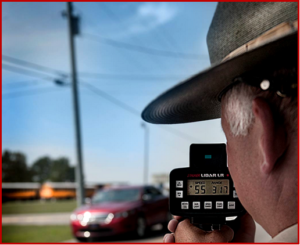 The chances that a Virginia driver was going at least 10 mph over the speed limit rose ~ 50% percent during March-June 2020, compared with the same period a year earlier, a new study from the Insurance Institute for Highway Safety shows.
The chances that a Virginia driver was going at least 10 mph over the speed limit rose ~ 50% percent during March-June 2020, compared with the same period a year earlier, a new study from the Insurance Institute for Highway Safety shows.
Federal data collected since then show that the increase in speeding and other risky driving behaviors continued throughout 2020 and 2021, according to IIHS. In 2020, speeding killed 11,258 people, according to the National Highway Traffic Administration* (NHTSA).
“The empty roads probably tempted pandemic-stressed drivers to put the pedal down,” says Jessica Cicchino, vice president of research at IIHS. “But information collected since the lock-downs ended and the roads filled back up suggests that risky driving has become the new normal.”
IIHS researchers have looked at data from more than 500 Virginia Department of Transportation speed counters and compared the proportion of vehicles exceeding the speed limit by at least 5 mph and 10 mph in March-June 2020 with the same period in 2019. They then estimated the change in the proportion of drivers speeding by the time of day, day of the week and type of roadway.
Overall, traffic volumes at the study sites fell by 25% during Virginia’s lock-down, which began with the closure of some businesses, such as restaurants, in mid-March 2020 and culminated with a statewide stay-at-home order that lasted until the middle of May. During the same period, the proportion of vehicles exceeding the speed limit by 10 mph or more rose 30-40% on all roads other than rural arterials, where there was little change. On weekdays, the proportion of vehicles exceeding the speed limit by at least 10 mph rose 43% between 6 a.m. and 8:59 a.m. and 63% between 3 p.m. and 5:59 p.m.
The absence of rush-hour traffic prompted drivers to step on the gas, IIHS concludes. National statistics show that this behavior remained even after traffic returned to pre-pandemic levels. Higher travel speeds persisted throughout 2020 and 2021, and other forms of risky driving also became more common.
“Crash deaths rose 7% in 2020 despite a dramatic decrease in the number of miles Americans drove. Fatal crashes involving speeding or alcohol and deaths of unbelted vehicle occupants saw particularly large increases,” according to the National Highway Traffic Administration (NHTSA). The number of passenger vehicle drivers involved in fatal crashes in which all three factors – speeding, alcohol, unbelted – played a role rose by 20%, while the number of 18- to 20-year-old drivers killed with a blood-alcohol concentration of 0.08 percent was 40%.
As drivers logged more miles in 2021, the pattern continued, according to NHTSA’s early estimates. Speeding-related fatalities rose another 5%, the number of unbelted passenger vehicle occupants killed rose another 3%, and deaths in police-reported, alcohol-involved crashes rose another 5% compared to 2020 levels.
“With nearly 43,000 lives lost on U.S. roadways last year, we can’t accept this increase in dangerous driving behaviors,” says Cicchino. “We need to double down on implementing proven solutions that have been shown to prevent speeding, like automated speed enforcement and road designs that slow traffic.”
*The National Highway Traffic Safety Administration has released its early estimate of traffic fatalities for 2021. NHTSA projects that an estimated 42,915 people died in motor vehicle traffic crashes last year, a 10.5% increase from the 38,824 fatalities in 2020. The projection is the highest number of fatalities since 2005 and the largest annual percentage increase in the Fatality Analysis Reporting System’s history.


Pingback: IIHS Wants Speed limiters on Trucks: ’bout time | AutoInformed